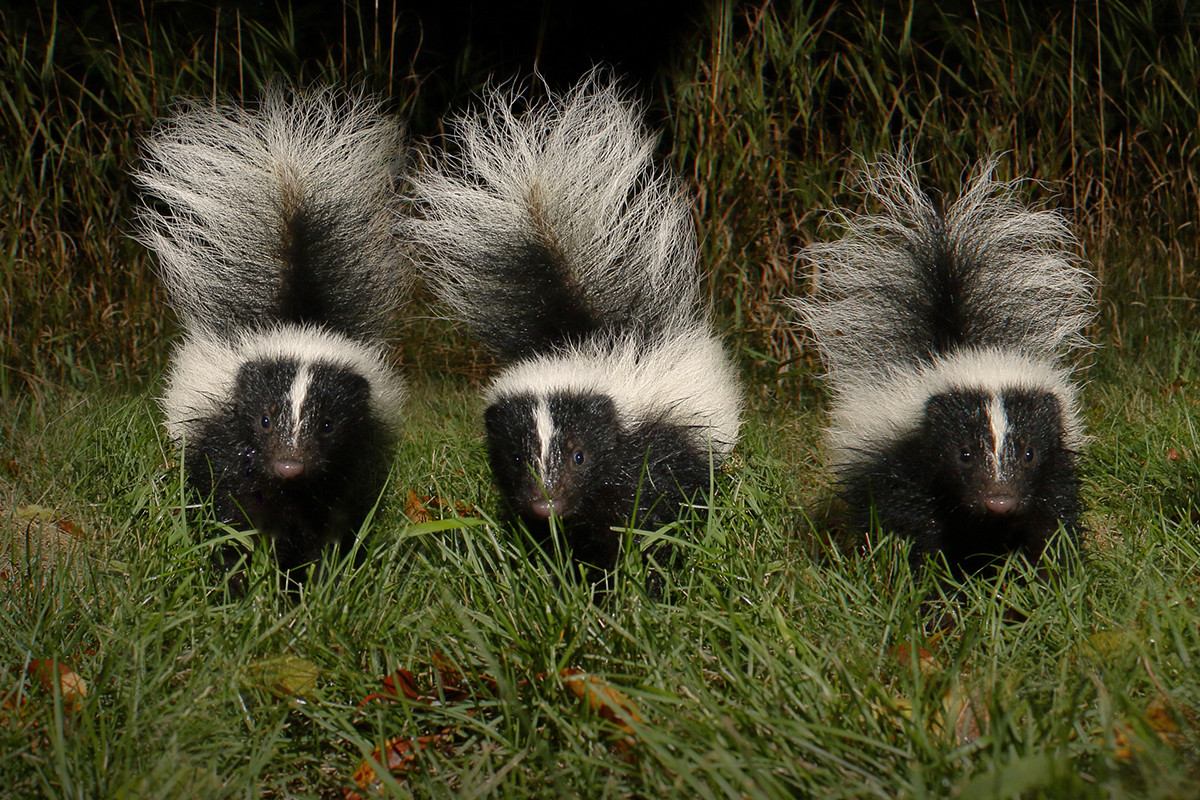Skunks, those strikingly striped creatures known for their potent defense mechanism, are more adaptable than you might think when it comes to choosing a home. Understanding where skunks live requires a look into their flexible nature and their ability to thrive in a variety of environments, both wild and human-influenced. From rural woodlands to bustling suburban backyards, skunks have carved out niches across diverse landscapes.
Natural Habitats of Skunks
Skunks are native to the Americas and are found in a wide range of habitats. Their adaptability allows them to inhabit various ecosystems, each offering different resources and shelter.
Woodlands and Forests
One common place where skunks live is in woodlands and forests. These environments provide ample cover from predators and offer a rich source of food. Skunks forage through leaf litter and under logs, seeking insects, grubs, and small rodents. The dense undergrowth and tree roots offer potential den sites, either naturally occurring or burrows created by other animals.
Fields and Grasslands
Open fields and grasslands also serve as prime skunk habitat. These areas are abundant with insects, a dietary staple for skunks. Ground burrows are easily excavated in these softer soils, or skunks may utilize existing holes made by ground squirrels or other rodents. The tall grasses provide some concealment, though skunks are less reliant on dense cover in these more open areas.
 Three skunks standing next to each other facing the camera on grass.
Three skunks standing next to each other facing the camera on grass.
Riparian Areas and Wetlands
Areas near water sources, such as rivers, streams, and wetlands, are attractive habitats for skunks. These riparian zones offer a diverse range of food, including amphibians, fish, and crayfish, in addition to the usual insects and rodents. The moist soil is also easier to dig in for burrow creation.
Skunks in Suburban and Urban Settings
Perhaps surprisingly, where skunks live often includes areas heavily modified by humans. Skunks are increasingly common in suburban and even urban environments, demonstrating their ability to adapt to human presence.
Suburban Backyards and Gardens
Suburban backyards, with their mix of lawns, gardens, and landscaping, can be surprisingly hospitable to skunks. Lawns can be a source of grubs and soil-dwelling insects, while gardens may offer fruits, vegetables, and even discarded food scraps. Skunks may den under sheds, decks, or porches, finding shelter in these readily available structures.
Urban Parks and Green Spaces
Even within cities, skunks can find refuge in parks, cemeteries, and other green spaces. These areas, though surrounded by urban development, can still provide patches of natural habitat with food and cover. Skunks in urban settings may also scavenge for food in trash cans or compost piles if unsecured.
 Two skunks, one walking in front of the other, on a grassy path.
Two skunks, one walking in front of the other, on a grassy path.
Skunk Dens: Home Within a Habitat
Regardless of the broader habitat, skunks need dens for shelter, raising young, and protection from predators and weather. Where skunks live on a day-to-day basis often revolves around their chosen den site.
Natural and Excavated Burrows
Skunks are capable diggers and may excavate their own burrows. These burrows typically consist of a tunnel leading to a chamber lined with leaves and grasses for insulation and comfort. However, skunks are also opportunistic and frequently utilize existing burrows created by other animals like woodchucks or foxes.
Utilizing Human Structures
In suburban and urban areas, skunks often take advantage of human-made structures for den sites. The spaces under porches, decks, sheds, and even foundations provide readily available shelter. These locations are often dry, protected, and relatively undisturbed, making them ideal for skunk families.
Factors Influencing Habitat Choice
Several factors influence where skunks live, driving their habitat selection and distribution.
Food Availability
Food is a primary driver of habitat choice for skunks. As omnivores, they require a diverse diet of insects, small animals, fruits, and occasionally carrion or human scraps. Habitats that offer a consistent and varied food supply are more likely to support skunk populations.
Water Sources
Access to water is another important factor. While skunks are not aquatic animals, they need a reliable water source for drinking. Habitats near streams, ponds, or even consistent dew or rain collection points are more suitable.
Shelter and Protection
Suitable denning sites and cover from predators are crucial habitat elements. Skunks need places to rest, raise young, and escape from threats. Habitats providing burrows, dense vegetation, or protective structures are favored.
Coexisting with Skunks in Their Habitats
Understanding where skunks live is the first step in coexisting peacefully with these often-misunderstood animals. While their spray can be a nuisance, skunks play a beneficial role in controlling insect and rodent populations. By securing trash, pet food, and potential den sites under structures, homeowners can minimize unwanted skunk encounters while still allowing these adaptable creatures to thrive in their diverse habitats.
 A small skunk wandering on through brown leaves and fallen logs.
A small skunk wandering on through brown leaves and fallen logs.
Skunks are a testament to wildlife adaptability, thriving in a surprising array of environments. From wild woodlands to suburban backyards, where skunks live is a reflection of their resourcefulness and their ability to make a home in a changing world.

